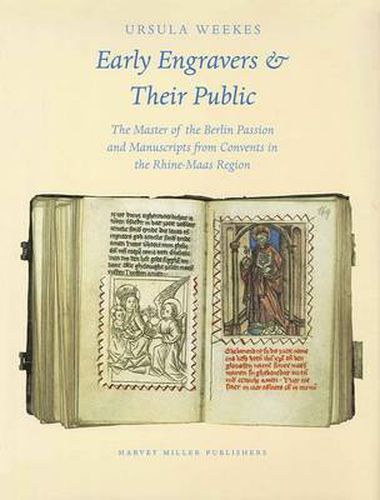Readings Newsletter
Become a Readings Member to make your shopping experience even easier.
Sign in or sign up for free!
You’re not far away from qualifying for FREE standard shipping within Australia
You’ve qualified for FREE standard shipping within Australia
The cart is loading…






This is a book about the production and reception of engravings and metalcuts in the Rhine-Maas region during the second half of the fifteenth century. The Master of the Berlin Passion played a pivotal role in the printmaking industry of the Lower Rhine during this period. He, together with the engravers working in his ambit, specifically targeted their prints at the growing market for illustrated devotional manuscripts, doing so to an extent unparalleled by engravers elsewhere in Europe. As a result, experimental hybrid books combining manuscript and engraving were a phenomenon that flourished particularly in the Rhine-Maas region during the fifteenth century. The first part of this book deals with the production of engravings and metalcuts for the manuscript market, concentrating specifically on the Master of the Berlin Passion and the engravers and metalcutters in his circle. The motives of these printmakers related to broader cultural and social changes during the latter half of the fifteenth century. These were critical years of transition in methods of book production as printmakers and manuscript-makers across Europe strove to exploit the potential of new print technology combined with traditional craft skills. The second part of the book concentrates on the public for whom these printmakers worked. Prints that were pasted, bound or sewn into contemporary manuscripts, and which still remain in position, provide an unparalled opportunity to study the audiences of engravings and metalcuts. The vast majority of fifteenth-century prints no longer survive, and most of those that do are divorced from the original contexts in which they were used. These manuscripts thus provide an invaluable insight into the production, reception, circulation, meanings and functions of prints in the Rhine-Maas region at this time. The predominantly female ownership of Rhine-Maas manuscripts with inserted engravings is a major theme of the book. Most of the manuscripts discussed are vernacular prayerbooks or Books of Hours that belonged either to nuns or to members of the lay female gentry in the Low Countries. In many cases the books can be linked to the pietistic reform movement of the Devotio Moderna suggesting that, as in other areas of Northern Europe, there was a link between the use of prints and movements of monastic reform. This book contributes to our understanding of an important circle of print artists and their public; early uses of printing during the period of transition from manuscript to print; the functions of, and aesthetic attitudes towards, engravings in the fifteenth century and the role of engravings in religious devotion prior to the Reformation, particularly among women.
$9.00 standard shipping within Australia
FREE standard shipping within Australia for orders over $100.00
Express & International shipping calculated at checkout
This is a book about the production and reception of engravings and metalcuts in the Rhine-Maas region during the second half of the fifteenth century. The Master of the Berlin Passion played a pivotal role in the printmaking industry of the Lower Rhine during this period. He, together with the engravers working in his ambit, specifically targeted their prints at the growing market for illustrated devotional manuscripts, doing so to an extent unparalleled by engravers elsewhere in Europe. As a result, experimental hybrid books combining manuscript and engraving were a phenomenon that flourished particularly in the Rhine-Maas region during the fifteenth century. The first part of this book deals with the production of engravings and metalcuts for the manuscript market, concentrating specifically on the Master of the Berlin Passion and the engravers and metalcutters in his circle. The motives of these printmakers related to broader cultural and social changes during the latter half of the fifteenth century. These were critical years of transition in methods of book production as printmakers and manuscript-makers across Europe strove to exploit the potential of new print technology combined with traditional craft skills. The second part of the book concentrates on the public for whom these printmakers worked. Prints that were pasted, bound or sewn into contemporary manuscripts, and which still remain in position, provide an unparalled opportunity to study the audiences of engravings and metalcuts. The vast majority of fifteenth-century prints no longer survive, and most of those that do are divorced from the original contexts in which they were used. These manuscripts thus provide an invaluable insight into the production, reception, circulation, meanings and functions of prints in the Rhine-Maas region at this time. The predominantly female ownership of Rhine-Maas manuscripts with inserted engravings is a major theme of the book. Most of the manuscripts discussed are vernacular prayerbooks or Books of Hours that belonged either to nuns or to members of the lay female gentry in the Low Countries. In many cases the books can be linked to the pietistic reform movement of the Devotio Moderna suggesting that, as in other areas of Northern Europe, there was a link between the use of prints and movements of monastic reform. This book contributes to our understanding of an important circle of print artists and their public; early uses of printing during the period of transition from manuscript to print; the functions of, and aesthetic attitudes towards, engravings in the fifteenth century and the role of engravings in religious devotion prior to the Reformation, particularly among women.